
As they are some of the most familiar fruits around, you could make a whole list of citrus fruits. Lemons and oranges, however, are the most popular. Whether it’s as juice, fruits, or some other product, there are many ways to enjoy these beloved treats. Perhaps you may even be aware that lemons and oranges have many varieties. It’s not just the ones you see at your local grocery.
With that, did you know that there are so many citrus fruits around? Indeed, citrus is one of the most diverse fruit groups. Some exist in nature, while others are hybrids of existing plants. And some are themselves hybrids of hybrids! Whether you are looking for something familiar or something exotic, here is a list of 30 citrus fruits to savor your zesty cravings.
What is a Citrus Fruit Anyway?
Before we start this list, it may be worth talking about what makes a citrus fruit a citrus fruit. The term mostly refers to the fruits of any plant in the family Rutaceae. Most commonly, the term refers to members of the genus Citrus.
Citrus fruits have several distinctive characteristics. They are hesperidiums, a kind of botanical berry with easily removable skin. Yes, oranges and lemons are technically berries, at least in the botanical sense. A botanical berry refers to a fruit that grew from a single flower ovary. Other examples of botanical berries are pumpkins, bananas, and watermelons. However, while grapes and blueberries are true berries, strawberries are not.
Another distinctive feature of most citrus fruits is that they have segmented parts. You can easily see this segmentation with an orange or lemon cross-section. In some citruses such as mandarin orange, the segments can be separated.
Finally, citrus fruits have a wide variety of flavors. Most of them have a noticeable sour taste, a result of citric acid. Some are sweet, while some are bitter. Variety is the spice of life it seems for the citrus family.
Orange
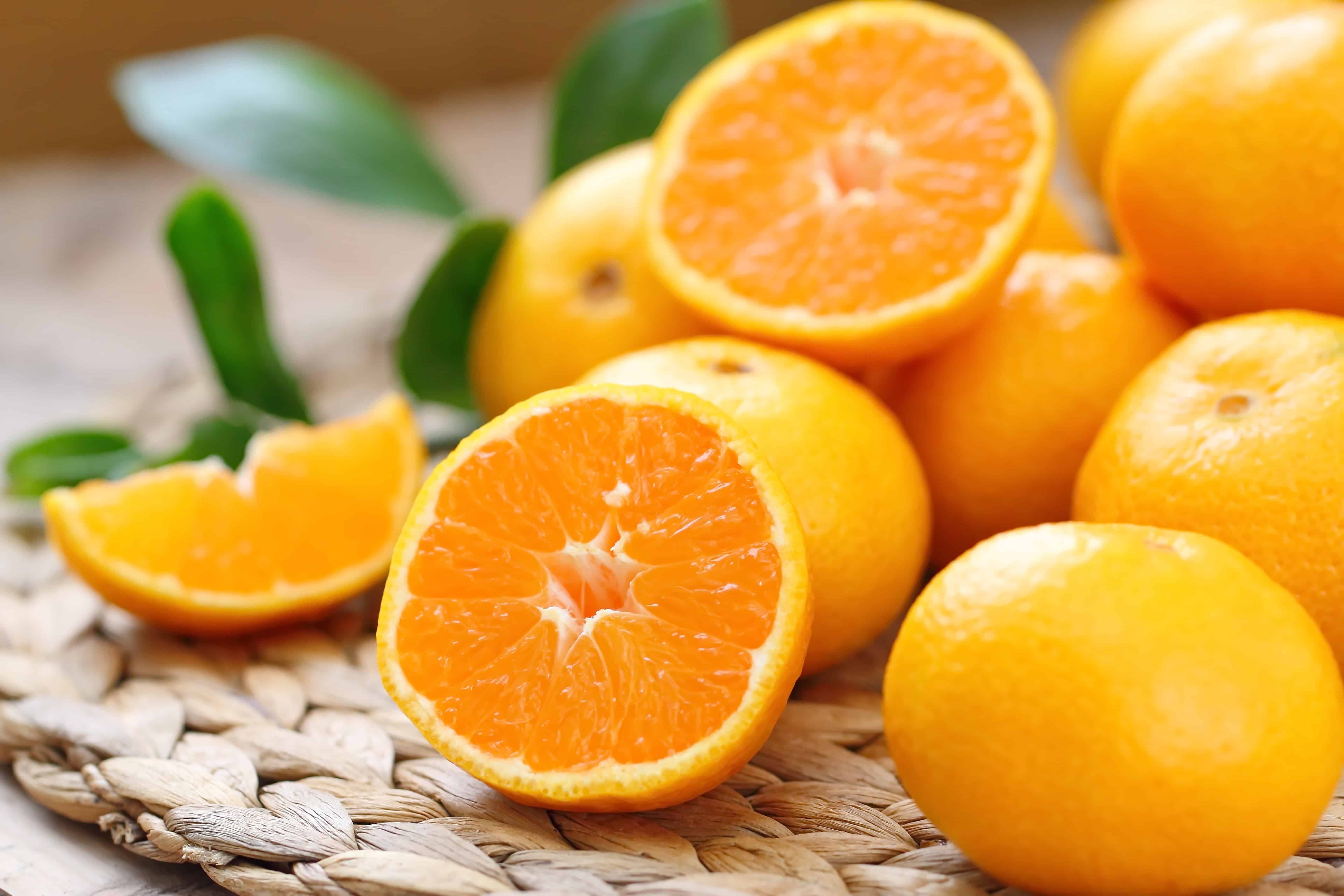
We start with perhaps the most familiar citrus fruit around, the orange. No list of citrus fruits would be complete without it. In reality, many types of oranges exist. The one you’re probably thinking about is actually the sweet orange. It’s known for its, well, sweet taste. However, it’s not necessarily the sweetest orange variety around.
Oranges have a wide variety of uses. They are the main ingredient in orange juice. People also consume oranges on their own. Cooks can add them as ingredients in salads, cakes, and many other recipes. Orange slices can even add flavor to drinks and orange peels can be turned into candy.
Oranges may be one of the most common fruits around, but they also have many health benefits. Health experts claim that they are rich in vitamin C, which aids human growth. They’re also a rich source of potassium, one of the most essential nutrients around. A healthy dose of potassium can help lower the risk of ailments such as hypertension. Finally, the citric acid in oranges can even decrease the likelihood of kidney stones.
Incidentally, the sweet orange is actually a hybrid. It’s probably a cross between a mandarin orange and pomelo. If you’re curious about these fruits, don’t worry. We’ll get to them later in this list.
Yuzu
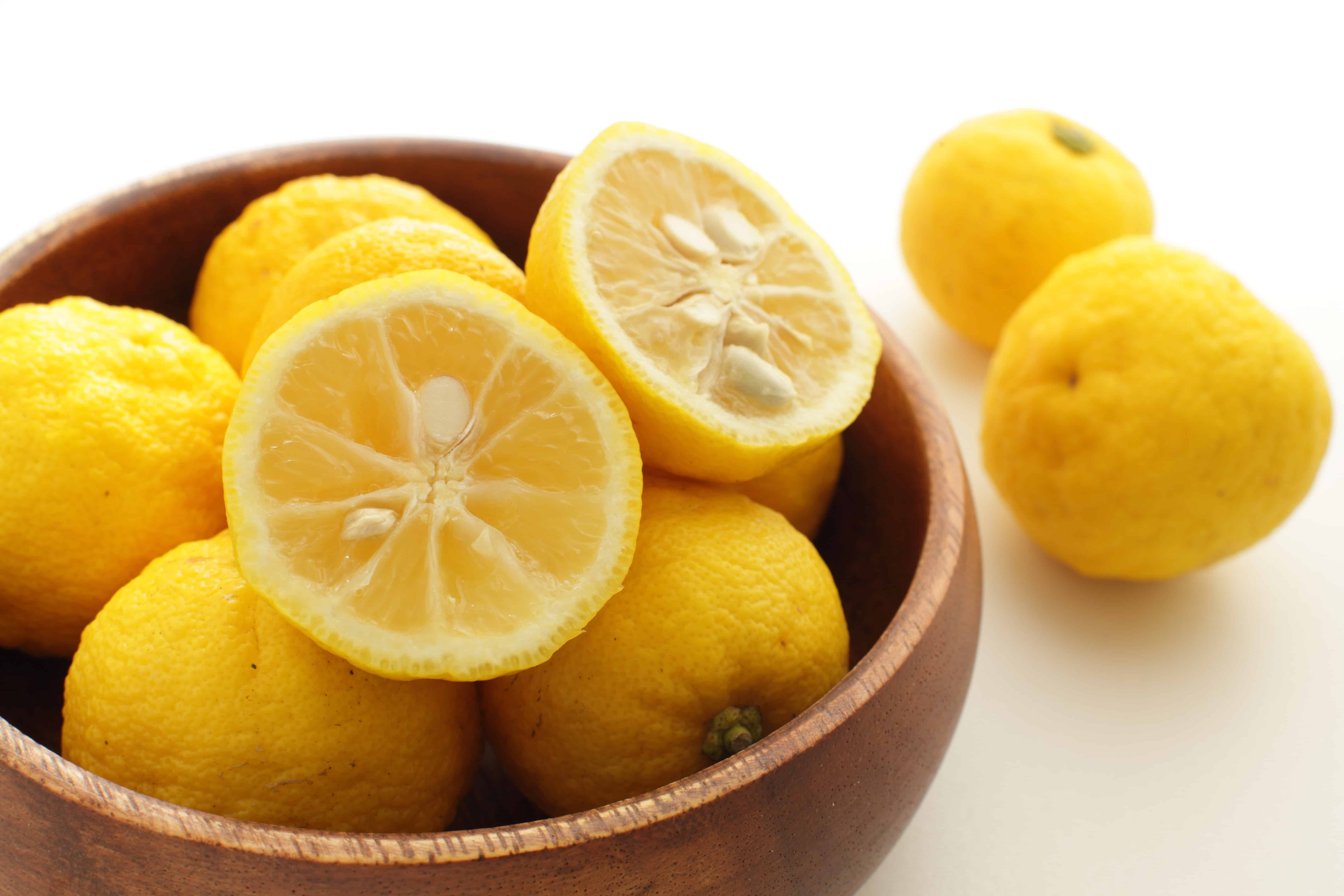
When you see a yuzu for the first time, you may notice that it looks similar to a mandarin orange. That’s because yuzus are actually a kind of mandarin orange hybrid. It does look similar to mandarin orange, except it’s yellow. That’s because botanists believe it to be a hybrid between that fruit and the Ichang papeda. Yuzus probably originated in China, but now commonly grow in Japan. Indeed, many Japanese dishes use the fruit for flavoring. One example is ponzu, a kind of soy sauce that uses yuzu juice as an ingredient.
According to health experts, yuzu’s main health benefit is its high level of antioxidants. Such a high level can decrease the risk of cancer and heart ailments. In addition, being a citrus fruit, it can also help prevent gout.
Lemon

Lemons are perhaps the next most familiar citrus fruits after oranges. After all, lemons are a common part of pop culture and American living. Lemonade stands are a common sight during hot months, while phrases like “when life gives you lemons” have entered the everyday vocabulary.
Lemons, of course, have a distinct yellow color. They have a sour yet sweet taste, which is part of the appeal of lemonade. Now, lemonade isn’t the only lemon drink to exist. Many sodas and other kinds of drinks also use lemon flavors. Indeed, lemon is one of the flavors used in 7-Up and Sprite. Meanwhile, one of Schweppes’ most popular products is bitter lemon, known for its, well, bitter taste.
Lemons aren’t just for drinks, however. They can also be used as ingredients in many forms of pastries and cakes. Lemon cakes have a distinct blend of sour and sweet. It may not be to everyone’s taste, but it does have a unique flavor.
If you want to have a consistent source of vitamin C in your diet, lemons are a great option. They’re rich in the stuff, which as previously mentioned has all sorts of health benefits. Lemon-flavored water is also a good way to satiate a taste for sweetness without relying on sugar.
Lime
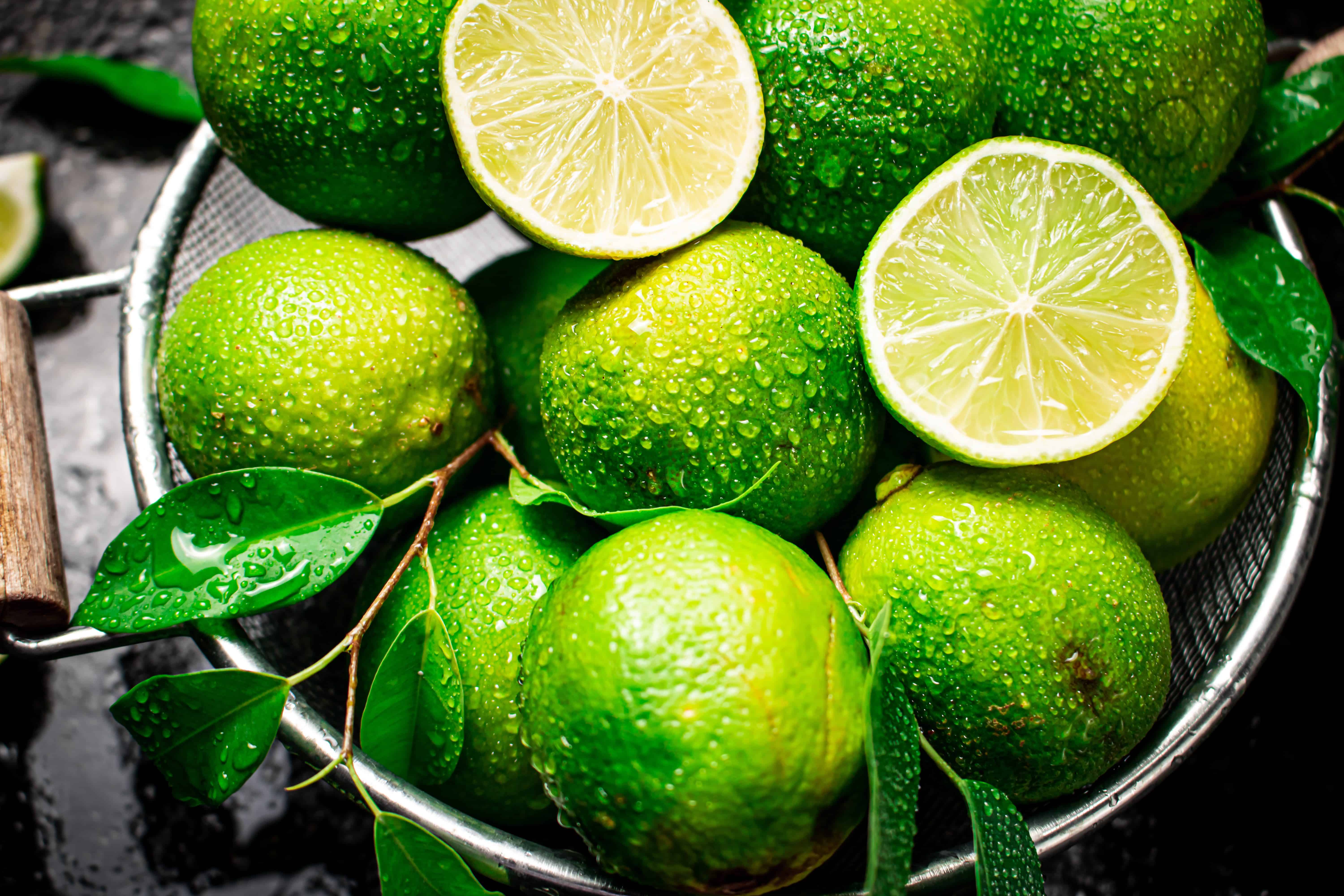
Remember how the previous entry mentioned that Sprite and 7-Up both use lemon as flavoring? Well, lemon is not the only citrus fruit that gives both drinks their distinctive taste. Both also use lime.
Now, what is lime exactly? Lime isn’t actually a single citrus fruit variety. Instead, it’s a group of many kinds of citrus fruits, not all of which are completely related. However, they tend to share many notable characteristics. Most of them are relatively small and spherical. They also tend to be green on the outside when unripe and yellow when ripe.
There are many kinds of limes. The key lime is perhaps the most familiar as it’s used in flavoring many foods and drinks. Other limes include the Kaffir and Persian limes. We’ll discuss some of these other limes in detail later. However, suffice to say, the many varieties of lime have as many uses as there are limes.
Grapefruit

No, grapefruits are not grapes. They don’t even look like grapes. According to reports, the name comes from the fact that the fruits grow in bunches from trees. People who saw these bunches compared their appearance to that of a bunch of grapes. Grapefruits are native to the Caribbean and are possibly a hybrid of the sweet orange and the pomelo. Don’t worry about the pomelo, we’ll get to it later on this list.
In reality, there are many varieties of grapefruit. The most common varieties are orange or yellow outside and reddish inside. Some varieties have yellowish or even white insides.
The grapefruit is not exactly the most appealing citrus fruit for many. It has quite a bitter taste, which fans like but others stay away from. Despite its taste, grapefruit juice has its fans. Of course, sugar can be added to neutralize its bitterness. In some places, people eat grapefruit with salt instead.
Despite its bitter taste, grapefruit may be worth adding to your diet. Dieticians claim that grapefruit is an excellent option for those who want more nutrients but fewer calories. It’s also linked with an improved immune system, improved blood circulation, and even weight loss.
Clementine

The clementine is one of the many so-called tangor citrus fruits. A tangor refers to any hybrid of the mandarin and sweet orange. Tangors actually have their own entry later on, but suffice to say they’re quite a wide group.
The clementine has an interesting history. It’s named after French missionary Clément Rodier. He was running an orphanage in Algeria and created a new cultivar in the orphanage’s garden. The cultivar gained popularity, eventually being exported around the world.
It obviously has an orange color. However, its color is quite a bright and lively shade, which makes it distinctive. Like its hybrid relative, the tangerine, it is also very sweet. Being a citrus fruit, it is rich in vitamin C and other nutrients, making it quite a healthy option for fruit lovers. Plus, it being sweet and not bitter makes it a favorite by many. In the United States, groceries and markets often sell it, so they’re quite a common sight.
Tangerine
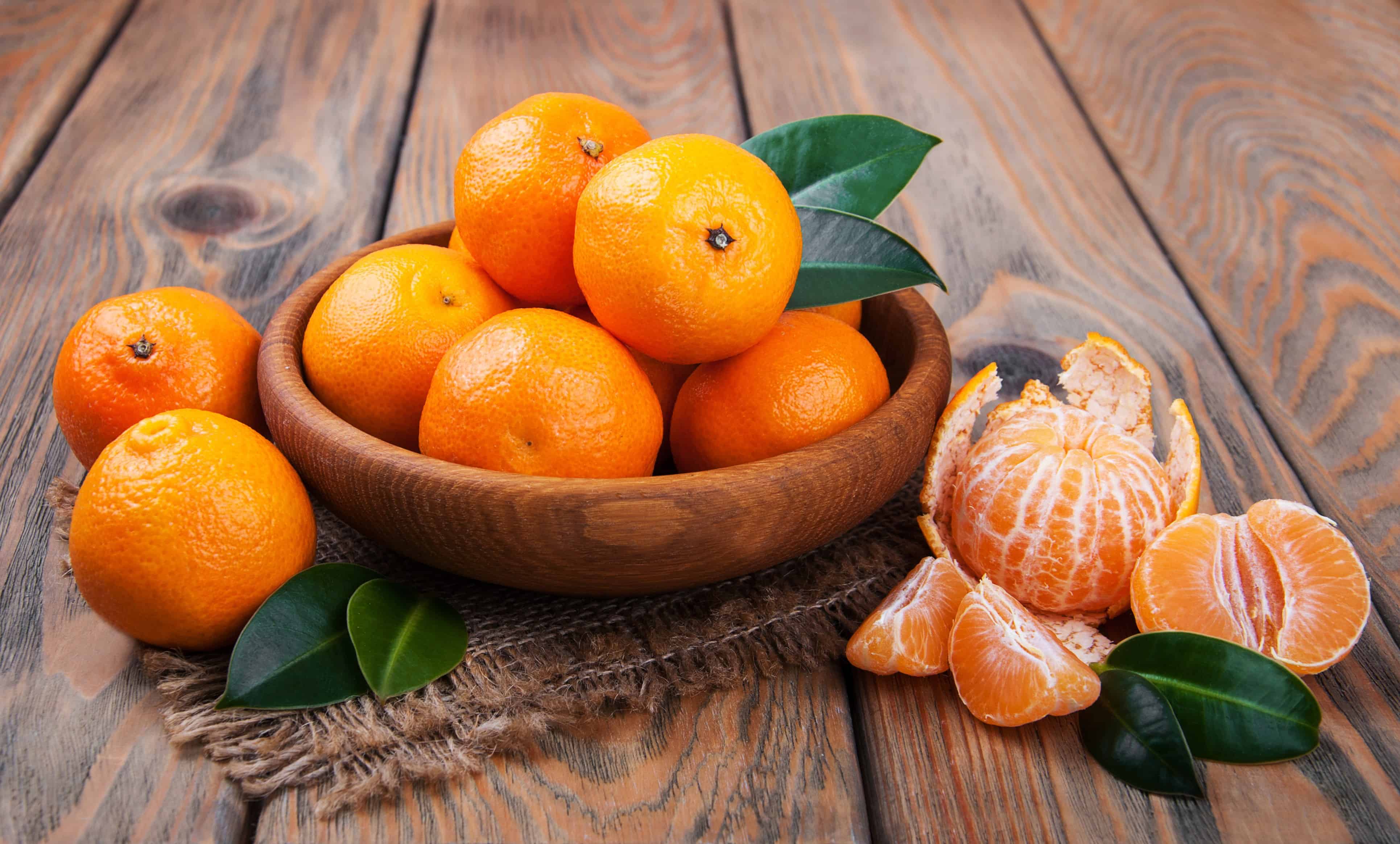
Speaking of the tangerine, it too is a tangor. This means it’s a hybrid between a sweet orange and a mandarin orange. Whereas clementines come from Africa, tangerines come from Asia. Indeed, they’re quite common over there. Although they originated in Asia, they are named after the city of Tangier in Morocco. This is because Tangier was the port from where the fruit traveled to most of Europe and the Americas.
There are some differences between a tangerine and a clementine. Notably, tangerines aren’t as sweet and they’re also bigger. Tangerines have also existed for thousands of years, whereas the clementine only dates to the 1890s.
Citron

The citron is somewhat similar to a lemon but has a different shape. It also has a similar yellow color. However, it’s not a lemon, at least not in English. “Citron” is also the French word for lemon, but this is talking about a different fruit entirely.
Although the citron is not a lemon, they are still related. Indeed, the citron is actually one of the ancestors of the lemon. The other ancestor? Probably a sweet orange, which as you already know, is itself a hybrid. However, the lemon is not the only citrus fruit descended from the citron. Indeed, according to National Geographic, the citron is one of five fruits thought to be ancestral to almost all citrus varieties. Other than lemons, citron descendants include the Mexican lime and the Buddha’s hand. The latter is actually a very interesting fruit on its own, but we’ll talk more about it later.
As for the citron itself, it has a very sour taste. It’s even sourer than lemons. Its skin is rather lumpy, but its shape is similar to that of a lemon. It also has a very thick skin and a small fleshy interior compared to other citruses. Citrons are used as ingredients in many recipes. They’re also good for the health: their consumption is linked to lowering the risk of cancer.
Meyer Lemon

Despite its name, the Meyer lemon isn’t a true lemon. At least, it’s not the lemon we all know and love. Instead, it’s yet another hybrid. It’s actually a cross between a sweet orange and another fruit. However, sources differ on whether that other fruit is the lemon or the citron.
Given its ancestry, it’s no surprise to see that the Meyer lemon is a small spherical yellow fruit. Indeed, it sort of resembles a sweet orange, except smaller and yellow. Sometimes, it does have an orange tint, but yellow fruits are more common. Unlike true lemons, it’s more sweet than sour. Some sources compare its taste to that of tangerines.
The Meyer lemon originated in China, where it’s actually more popular for ornamental reasons than for consumption. Frank Meyer, a USDA agricultural explorer, brought the plant to the US. Yes, the fruit is named after him.
Just like its relative, the Meyer lemon can be used in a wide variety of recipes. It can be an ingredient in drinks, cakes, pastries, and other kinds of food. Given that it’s a citrus fruit, it has many nutrients known to help prevent serious diseases such as cancer.
Mandarin Orange

The mandarin orange (or simply mandarin) is one of the most familiar citrus fruits around. It’s not just popular, but also very important. This is because the mandarin orange is the ancestor of many popular citruses. You know those sweet oranges you love to eat? They’re a mix of mandarins and pomelos. As mentioned earlier, the Meyer lemon also descends from the mandarin. Other mandarin descendants include the tangerine and the tangelo. They’re sometimes mistaken for tangerines in particular, which tend to be larger.
Mandarin oranges are among the oldest-known citrus fruits around. The fruit probably first emerged in India and later became popular in China. Indeed, that’s why it has the name mandarin (same as the standard type of Chinese). From China, the fruit spread across the rest of Asia. Indeed, the mandarin orange is one of the most popular citrus fruits in Asia. In parts of the continent, they’re readily available in groceries or street stalls. In the West, mandarins are popularly used in salads.
So next time you’re chowing down on sweet oranges or drinking orange juice, spare a thought for the mandarin. Many of your favorite citruses would not exist without them.
Key Lime
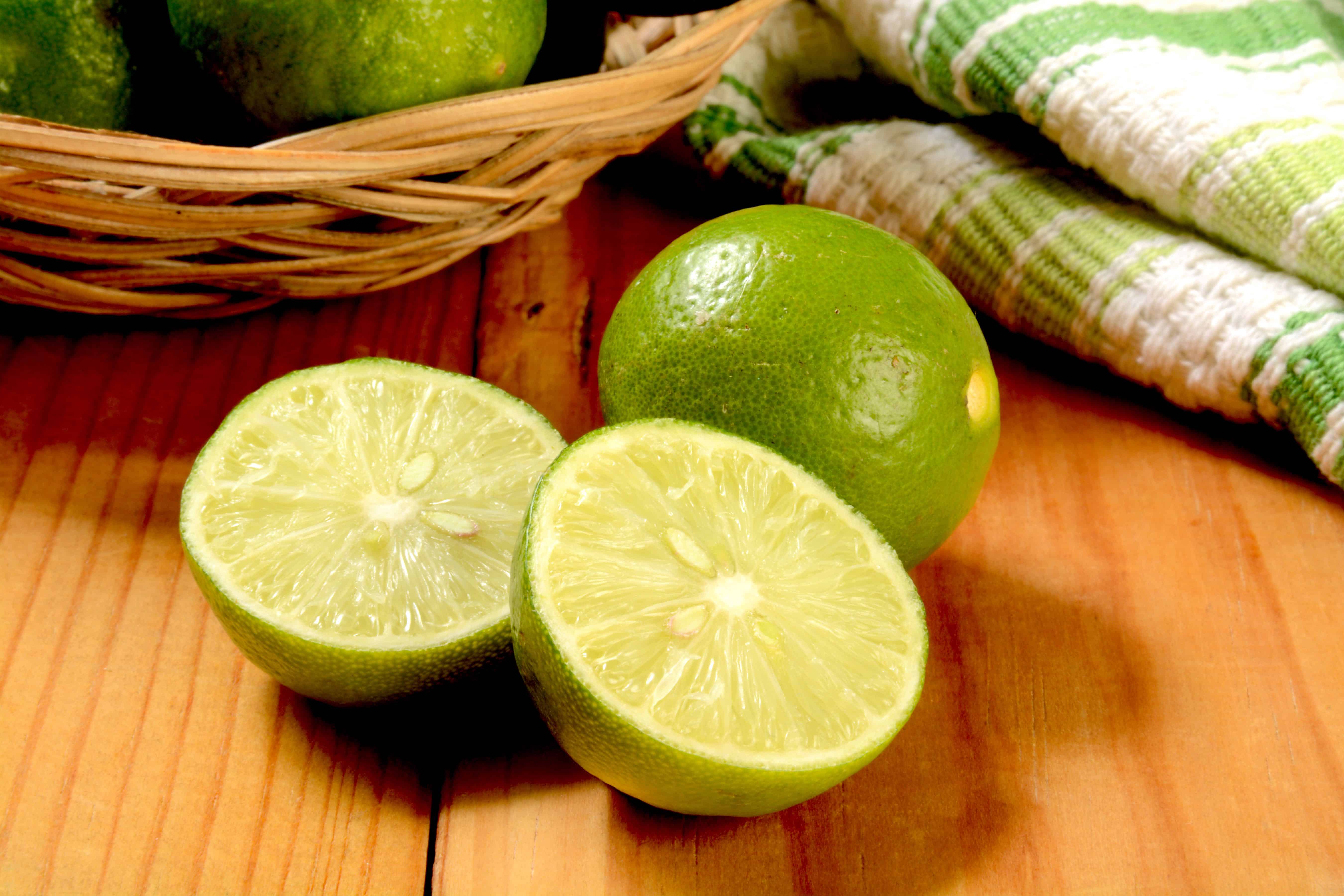
The key lime is one of the most familiar types of lime around. An alternate name for the fruit is Mexican lime. Despite the name, it’s not native to Mexico. Instead, it originated in Southeast Asia. It’s a hybrid of the citron and Citrus micantha, a wild citrus found in the Philippines. The fruit spread via traders to the rest of the world. It gets its common name from the fact that the Florida Keys was at one point its main production center.
It’s quite popular in Southeast Asia. Malaysians and Singaporeans call it limau nipis, while Filipinos know it better as dayap. It’s most commonly picked while still green, as it’s most sour during that state. It has a more yellowish color when ripe. Because of its sour taste, foodies often add their juice to condiments. Recipes also sometimes call for it as a substitute for lemons. It tastes quite good in cakes and other pastries.
One main difference between the key lime and other limes is its size. The key lime is smaller than the Persian lime. Interestingly enough, the key lime is actually one of the ancestors of the Persian lime. The latter is a hybrid between the key lime and the lemon. This explains why the Persian lime is bigger and also has a lemon-like shape.
Tangelo

The tangelo is one of the many mandarin/pomelo hybrids out there. Indeed, its name is actually a combination of “tangerine” and “pomelo”. The tangelo has an orange color just like the tangerine. However, it has a very distinct shape. In particular, it has a visible bump at the top of the fruit. Given their ancestry, it’s no surprise they’re pretty sweet.
Like some of its relatives, its inner fruit consists of separate parts. These parts can be eaten individually. Tangelos can be snacks or ingredients. There are many varieties of tangelos: these include Jamaican, Minneola, and Jamaican.
Kaffir Lime
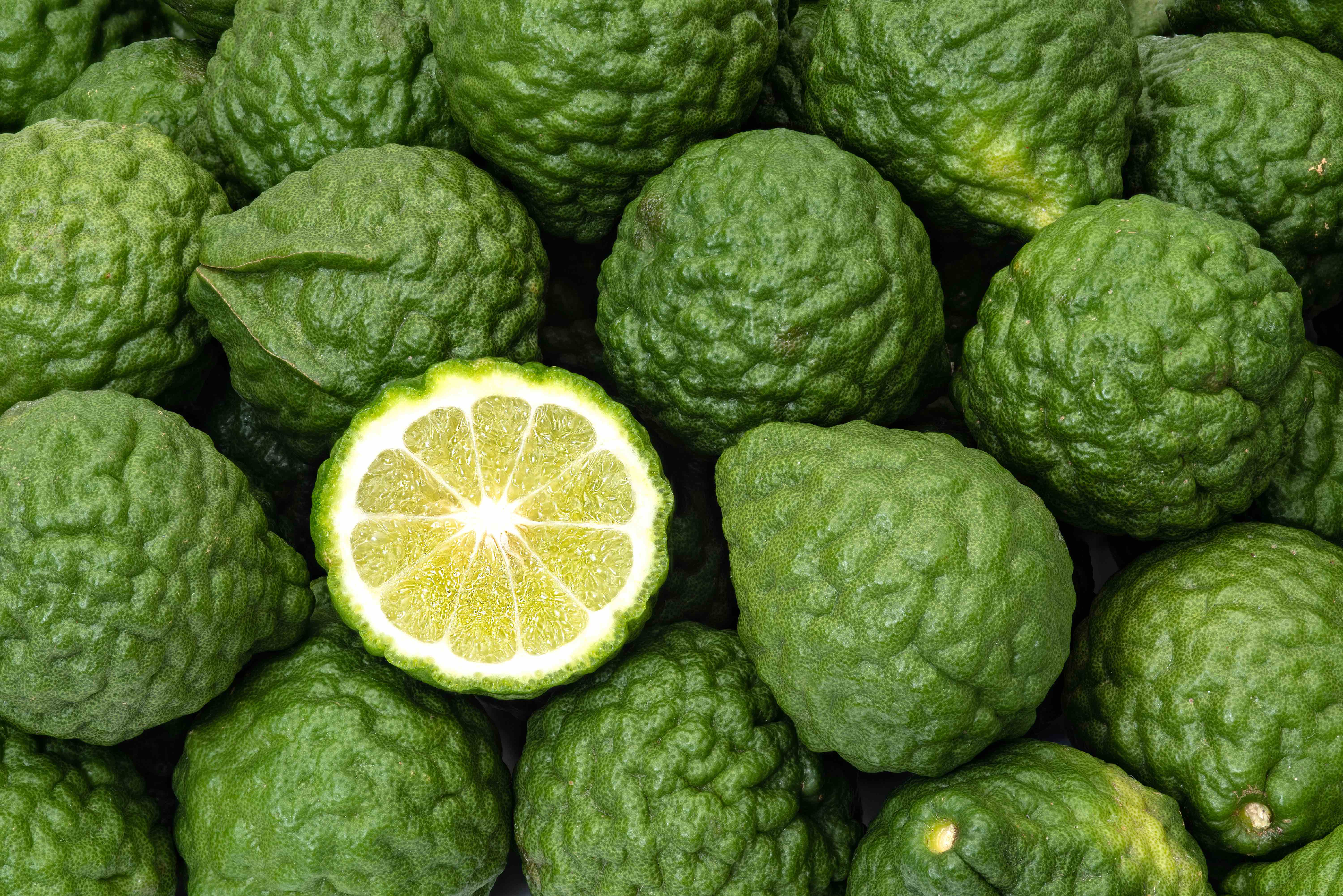
The kaffir lime has a rather unusual shape. If you see one, you’ll notice it has many wrinkles that look similar to warts. That is its distinctive feature.
The kaffir lime is native to Southeast Asia. It’s found in Indonesia, the Philippines, Malaysia, and Thailand. Its fruit can flavor various kinds of food. However, it also has other uses. Oils made from the fruit have uses in cooking and cosmetics. The leaves have a distinct aroma, which make them popular in Indonesian and Vietnamese cuisine. In Indonesia, cooks use the leaves in flavoring soto ayam, a kind of chicken soup.
Kaffir limes are not as popular in the West as they are in Asia. However, they still have their uses. The lime’s leaves are a great option in giving dishes a distinct smell or taste. Given its rarity in Western cuisine, using kaffir lime leaves in dishes is sure to make a special treat.
Calamondin
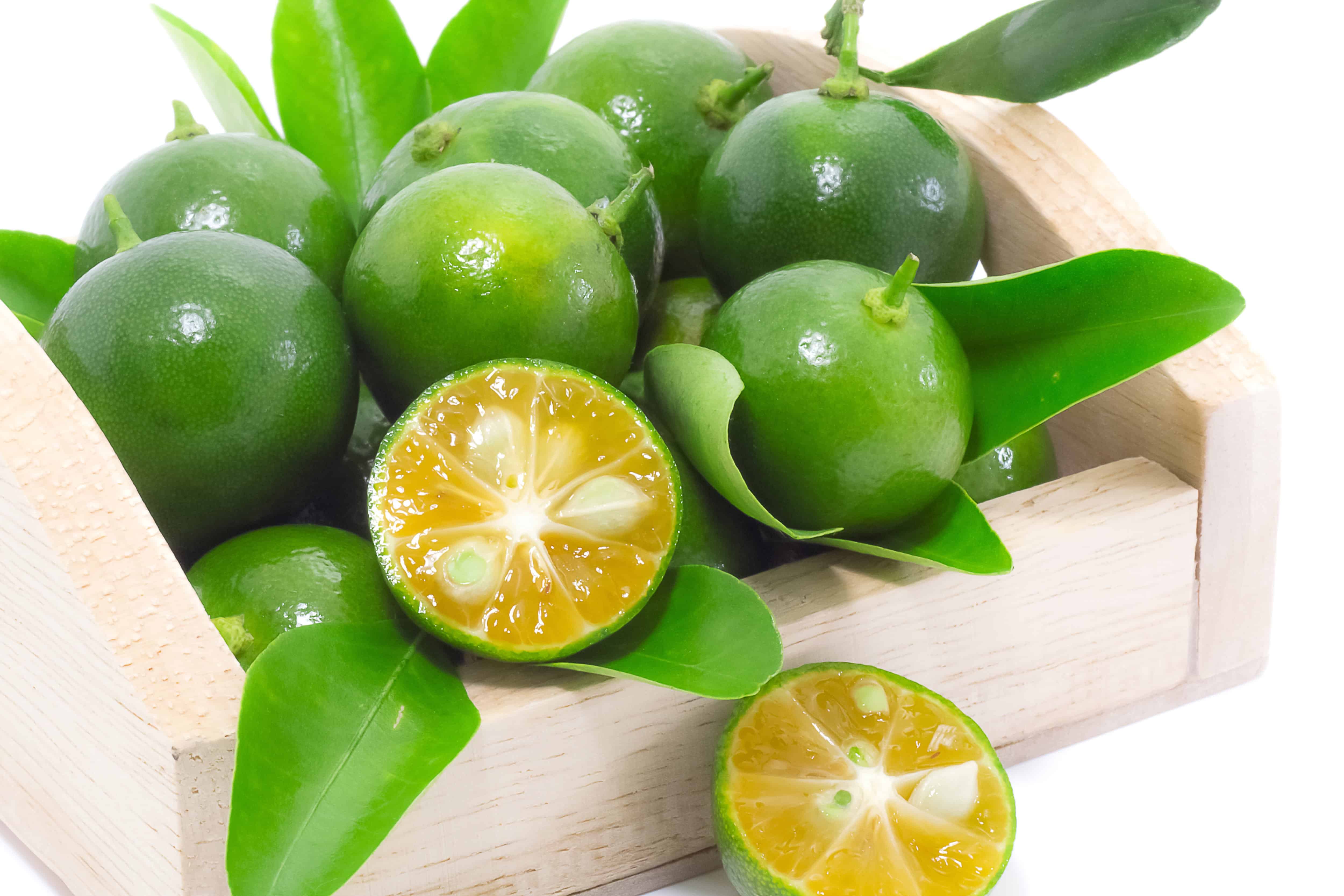
This fruit may not be that familiar to those from Europe or the Americas. However, calamondin has a special place in the hearts of many Southeast Asians. It’s most popular in the Philippines, where it goes by the name calamansi.
Calamodin is a staple of Philippine cuisine. Its sour juice is added to condiments such as soy sauce, as well as noodles and other recipes. Philippine noodles are not complete without its flavor. Calamansi juice, made from the fruit, is also very popular in the country.
While calamondin is most associated with the Philippines, it also grows elsewhere in Asia. It is common in Indonesia and Malaysia, where it goes by the name limau kasturi. It’s also popular in Thailand. The plant also grows in Taiwan and China, where the fruit is a common ingredient in cold drinks. Outside of Asia, calamondin is more common as an ornamental plant.
Calamondin is possibly a hybrid of the kumquat and the mandarin orange. It’s rare to see fully ripe calamondins, as people often harvest the fruit while still unripe. When ripe, they have yellow or orange skin. While unripe, they have green skin and green insides. People harvest the fruit early because it’s during this state that they have a distinct sour taste.
Bitter Orange

As the name suggests, it’s a variety of oranges. Another alternative name for the fruit is sour orange. The names are to distinguish them from sweet oranges (or simply oranges to most of you). The fruit gets its name due to its taste. It’s both very sour and very bitter. Despite the bitter taste, it does have its fans.
Bitter oranges are the subject of several ongoing studies regarding their health effects. The fruit contains the substance synephrine, which can raise blood pressure. Although the substance has medicinal value, research is ongoing as to whether bitter oranges can raise blood pressure. Because of this, some health experts claim that those who want to try it may want to ask for a doctor’s advice first if they have hypertension.
Bergamot Orange
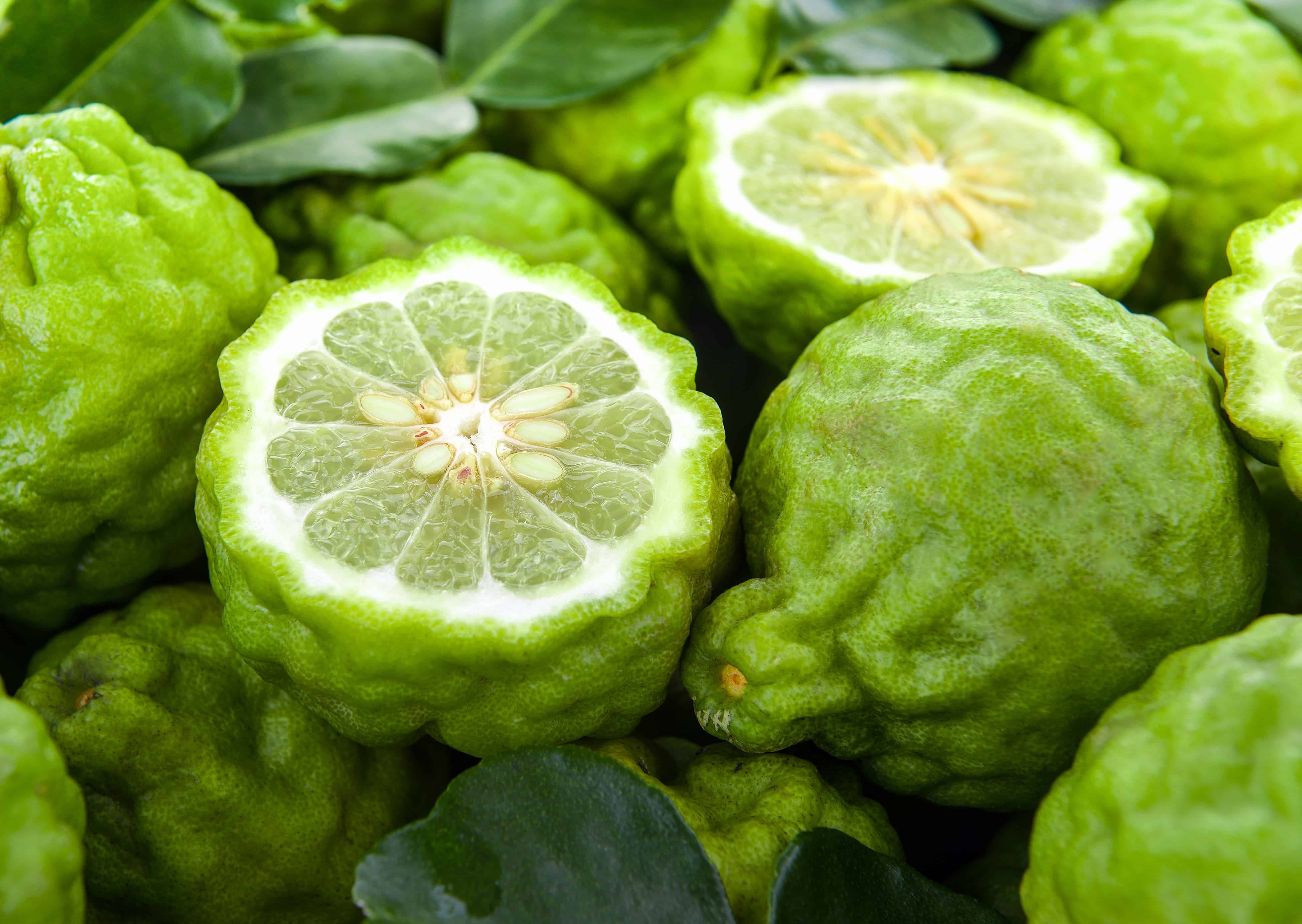
The Bergamot orange, or simply the bergamot, is one of the more unusual citrus fruits around. According to genetic studies, its possible ancestors are the bitter orange and the lemon. When ripe, it has a yellow exterior much like a lemon. It also has a vaguely lemon-like shape. However, some varieties have many bumps, similar to the kaffir lime.
Bergamot’s main commercial use is in the production of oils. Earl grey tea uses oils made from the fruit’s peels, hence the tea’s distinct flavor. The oils also have a fragrant aroma, hence their frequent use in aromatherapy. Although research is ongoing, some studies suggest that bergamot oil can help mitigate anxiety and lower cholesterol, among other benefits.
The fruit itself has a very sour and bitter taste. Because of this, its use in cooking is relatively rare, especially raw. However, bergamot still finds uses in recipes, albeit usually in Earl grey tea form.
Persian Lime
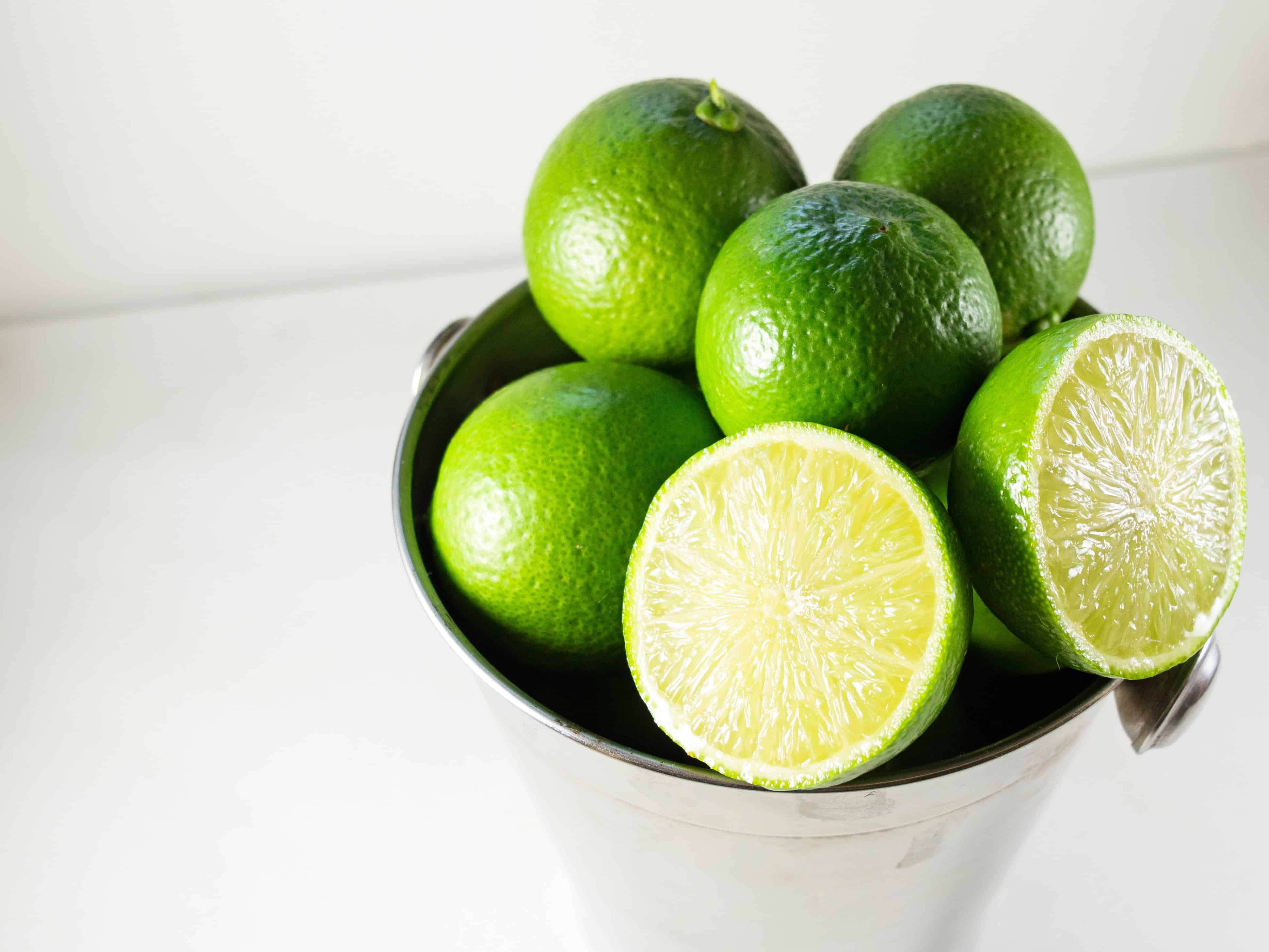
The Persian lime is another familiar lime. They get their name from the place where they originated, Iran (formerly Persia). The fruit itself is probably a cross between a key lime and a lemon. You can sort of see this when you see the Persian lime in person. It’s round, short, but a little pointed, just like a lemon. Think of it as being like a green lemon.
The Persian lime is perhaps the most popular lime variant in America. It’s popular mainly because most of them don’t have seeds. The fruit is parthenocarpic, meaning they reproduce without seeds. Instead of fertilization, their trees reproduce via grafting.
Persian limes also go by other names, including Tahiti lime and seedless lime. Like many other citrus fruits, it’s good for those aiming to prevent heart ailments and kidney stones. Given Persian lime’s wide availability and richness in nutrients, they’re a perfect option for the health-conscious fruit lover.
Lumia
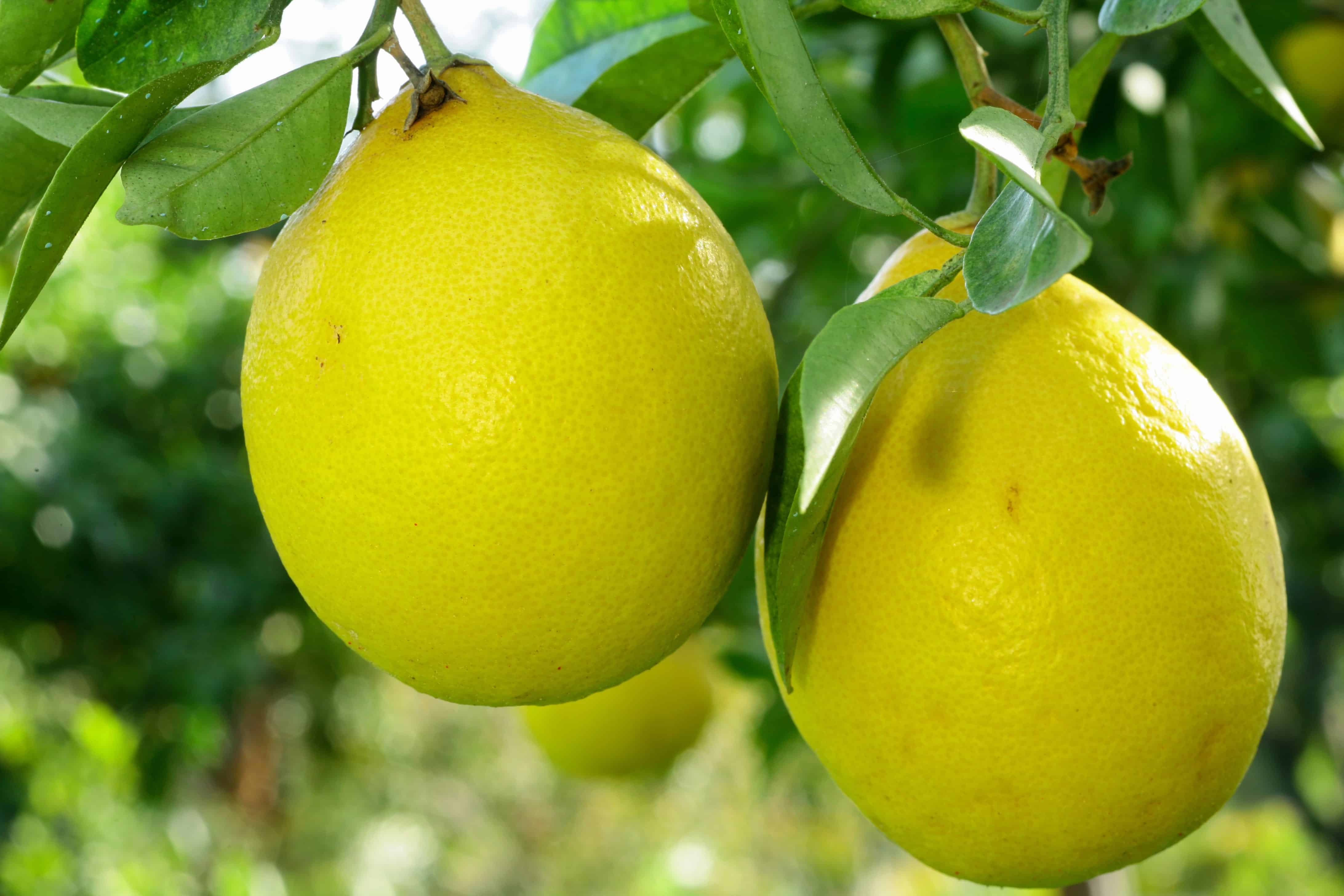
No, it’s not named after Microsoft’s failed phone line. The lumia is also known as the pear lemon, and it’s not hard to see why when you see it. As the nickname suggests, it has a pear shape. It also goes by the name Commander’s pear.
The lumia is a little unusual compared to other citrus fruits. For starters, it barely has any juice. This means you can’t really use it for flavoring, unlike its relatives. However, various sources state that its flesh is very sweet. It’s not the most common citrus variety out there, and it doesn’t come cheap in online stores. Still, it may be worth trying if you have the chance.
Sudachi
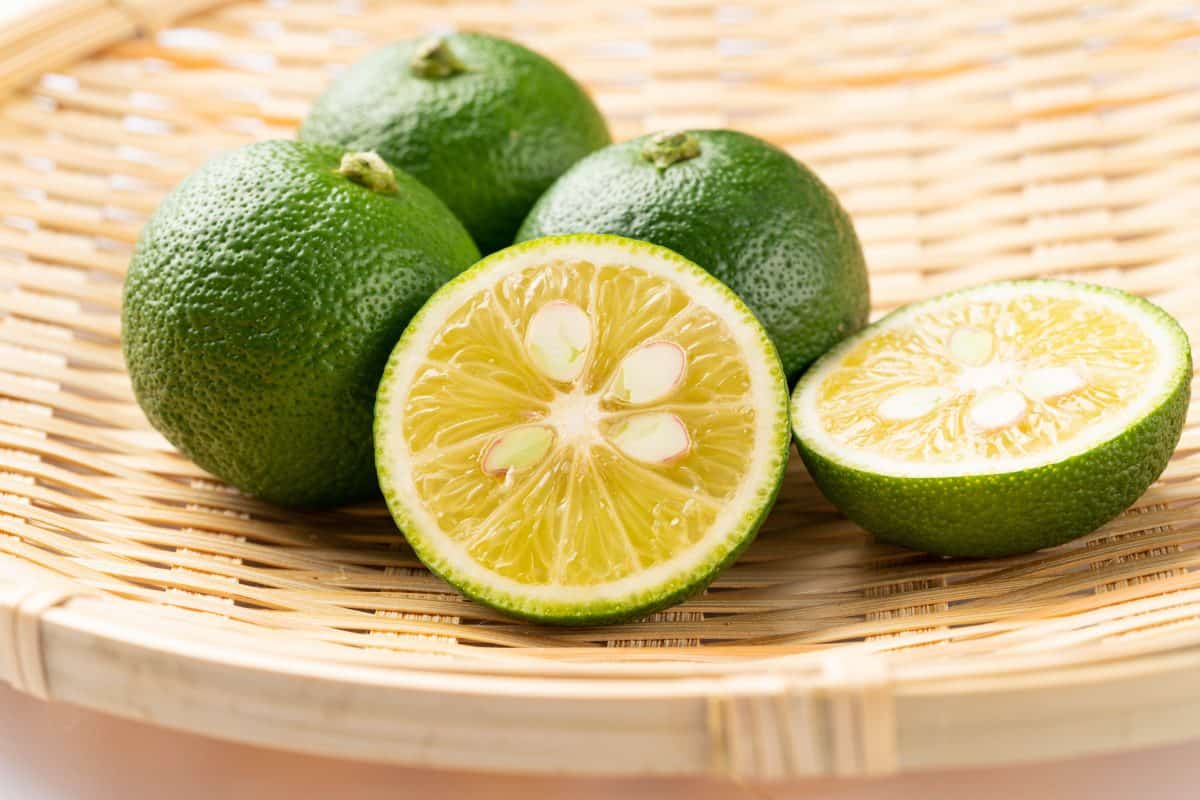
From the name alone you can tell it’s from Japan. And indeed it is. According to genetic studies, it’s likely a descendant of the yuzu. It originated in Tokushima Prefecture on the island of Shikoku. And just like the yuzu, it’s a common ingredient in condiments and dishes. The juice is said to give soy sauce a unique taste.
Because of its relative rarity, many high-end restaurants in Japan use it. For those who can’t travel or afford it, sudachi juice bottles are sold online. But if you ever find yourself in Tokushima Prefecture, your trip may be incomplete without trying sudachi at least once.
Pomelo
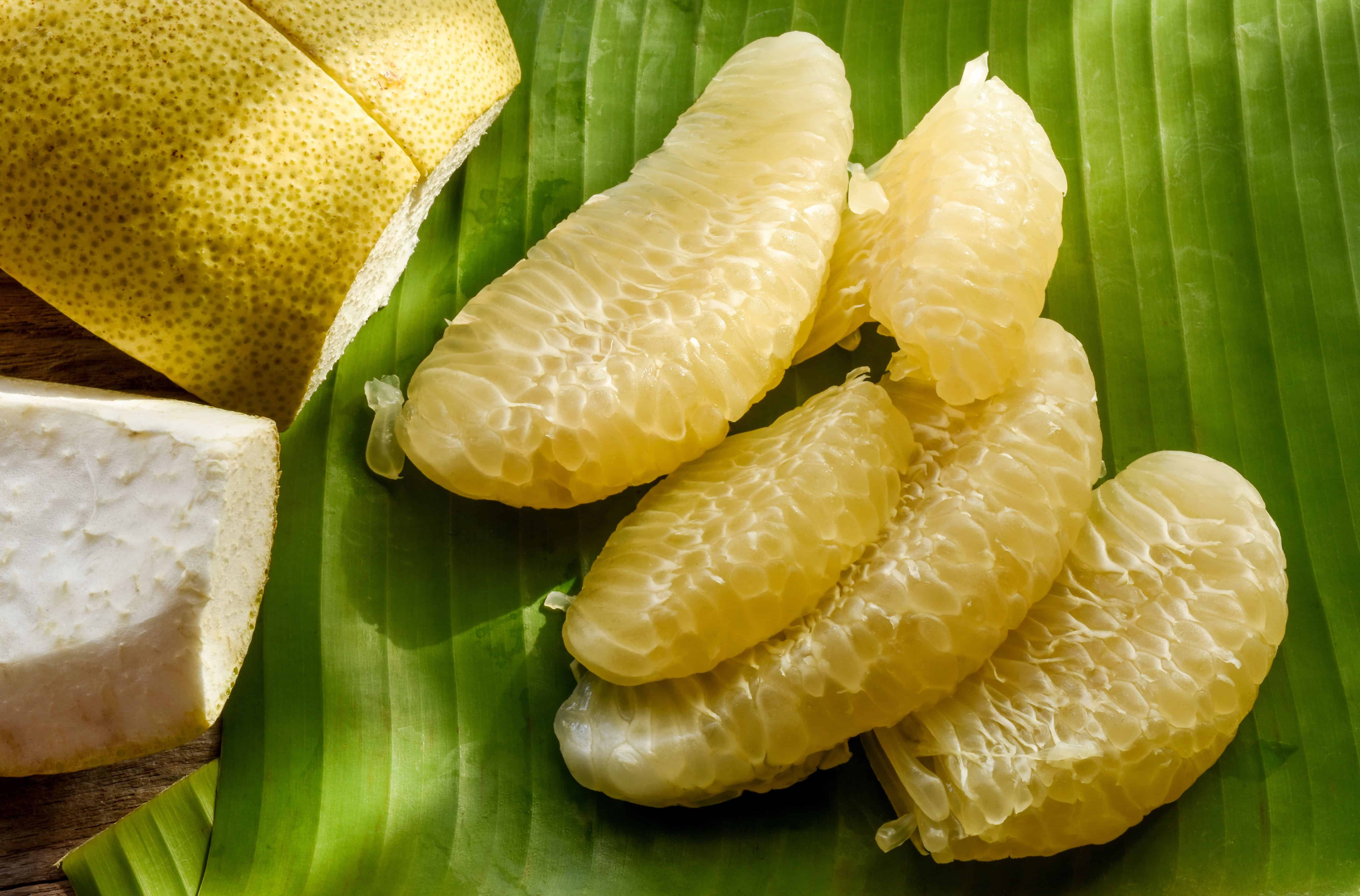
The pomelo is one of the granddaddies of the citrus family. Many fruits, such as the sweet orange, the grapefruit, the tangelo, and many more descended from the pomelo. It’s even in the name of the tangelo (tangerine and pomelo, get it?)
The pomelo comes from Southeast Asia. It’s particularly common in the Malay Peninsula. Pomelo interiors can either be white or pink. Pink pomelos tend to be sweeter than white ones. However, the flesh is covered by a membrane. You may want to remove this membrane; otherwise, the fruit would taste very bitter. Southeast Asians often eat pomelo with salt to neutralize any sour tastes.
Despite its reputation for bitterness, the pomelo has many health benefits. According to diet and health experts, the pomelo is very rich in vitamin C. Indeed, just one pomelo can give you the equivalent of multiple days of regular vitamin C intake. Vitamin C helps build a strong immune system. In addition, pomelos are also rich in fiber. They’re perfect for those who are constipated or want to improve their digestion. Finally, like most citrus fruits, it’s also rich in antioxidants. As we’ve learned so far, antioxidants help prevent cancer.
If you’re health conscious and want to try a more exotic fruit, pomelos are a great option. Just be willing to tolerate the bitter taste.
Blood Orange
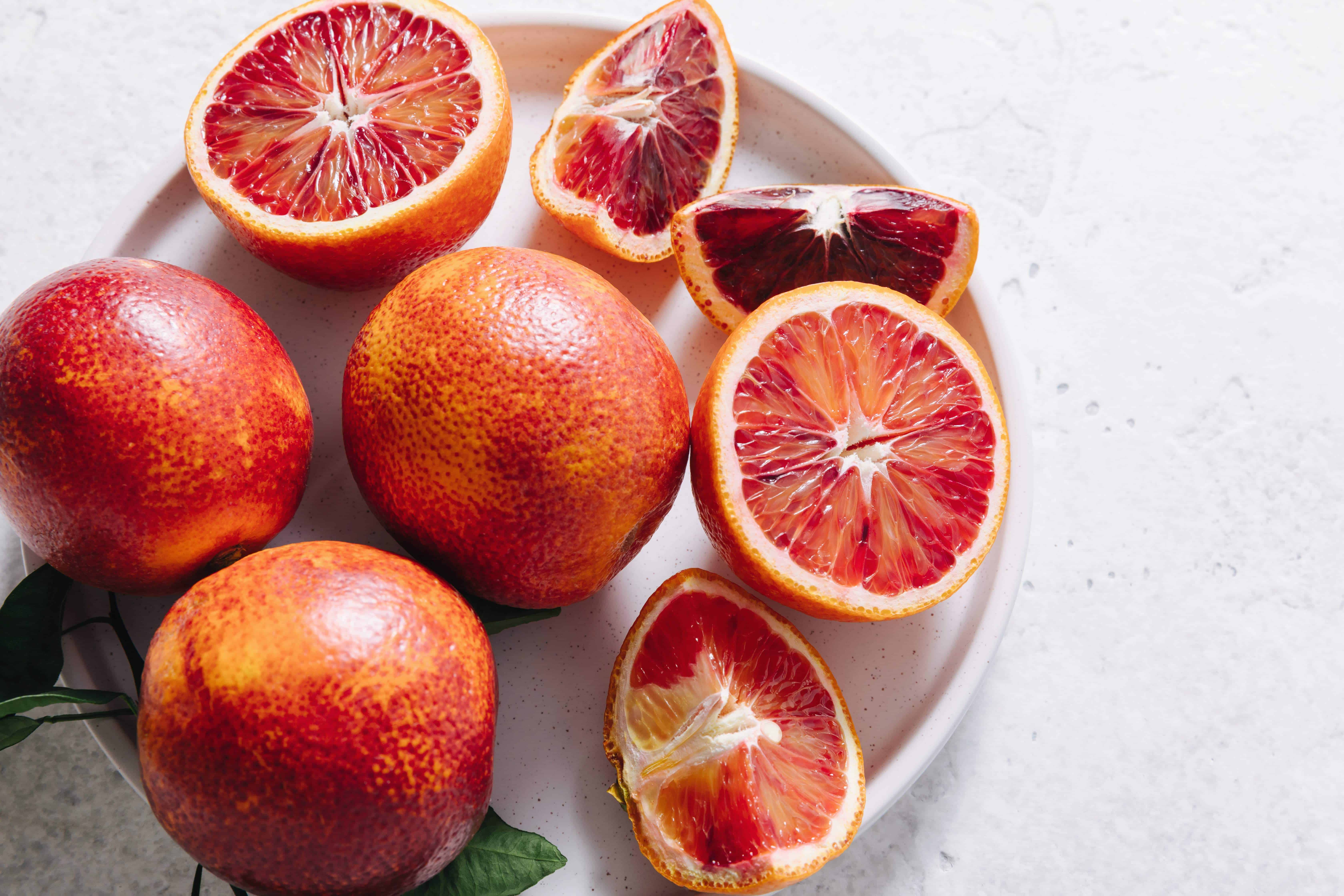
Unlike some other entries on this list, the blood orange is not a hybrid. Instead, it’s a mutated version of the sweet orange. It gets its name from the fact that its flesh is deep red, although the skin is usually still the normal orange color. This distinct color is thanks to the presence of chemicals known as anthocyanins. These chemicals are most common in fruits that grow in places with low night temperatures. Interestingly, while anthocyanins are rare among citrus plants, they’re common in other fruits such as cherries and blueberries. Not only is the interior of the fruit a bloody red, but even the juice resembles blood!
The blood orange doesn’t taste the same as regular sweet oranges. In fact, some say it’s actually sweeter! Perhaps due to the presence of anthocyanins, many sources claim that they taste similar to berries. The blood orange’s unique appearance and color make it a popular choice for cocktails and desserts. If you have a citrus-based recipe and want it to stand out, the blood orange is a safe bet. Plus, blood orange juice not only looks cool but also tastes great.
As with most citrus fruits, blood oranges have many health benefits. They’re a good source of vitamin C and antioxidants. The blood orange is the perfect fruit for a citrus lover who wants to try something different.
Rangpur

The Rangpur goes by many names. It goes by lemandarin, the mandarin lime, and the Rangpur lime. Despite the name, it’s not a lime at all. It’s not even a lemon, despite the lemandarin alternate name. In fact, if you see one, you’ll think it’s some kind of orange. And it is, sort of.
The Rangpur is actually a cross between the citron and the mandarin orange. If you noticed those earlier names mentioning mandarin, that’s the reason. From the name you can probably tell that it has something to do with South Asia. Indeed, the fruit comes from the subcontinent, though there’s some debate exactly as to where. It doesn’t help that there are multiple settlements named Rangpur there, as well as the city of Rangpur in Bangladesh. Rangpurs grow around the world and also have many other alternate names. For example, Hawaiians call it kona lime.
On the outside, it looks more like an orange than a lime or a lemon. It has an orange color. However, it’s not wholly spherical. Instead, it has some roughness.
Rangpur gin is a relatively new product that has become popular in recent years. It’s a Tanqueray product and has an orange-like taste. Rangpurs themselves can also be used as an ingredient in Indian dishes.
Daidai
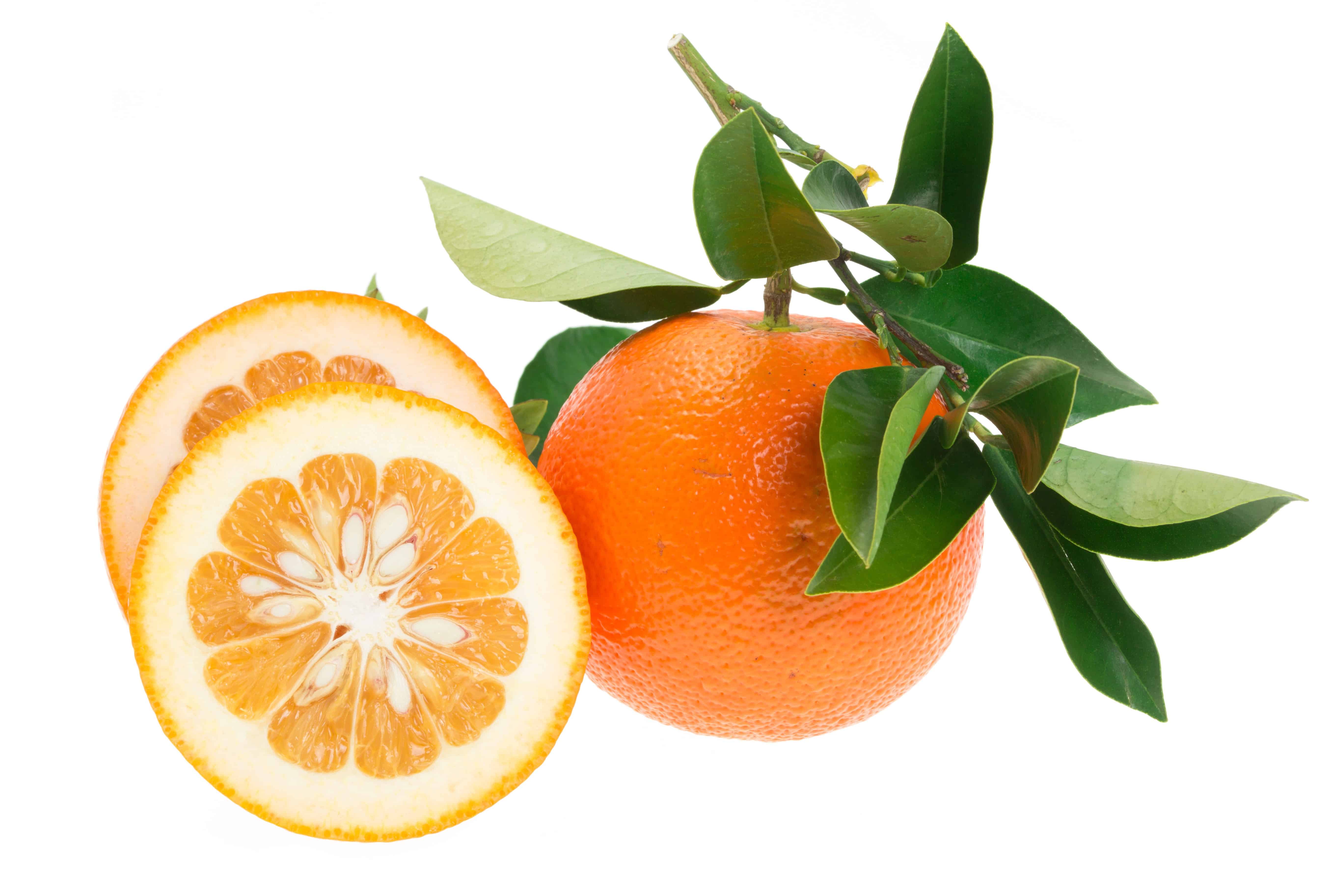
Daidai has one of the more unusual names on this list. No, it’s not talking about dying. The name is Japanese and means “many generations”. This refers to how a tree can have many different generations of fruits. This is because, unless someone picks the fruits, they stay on the tree indefinitely. Despite the Japanese common name, it probably originated in China, where it’s also cultivated. It also grows in Korea.
The Daidai is actually just a kind of bitter orange. The fruits have some cultural significance. They’re a common sight in New Year celebrations in East Asia, as people believe their round shape brings good luck. In Japan, temples and shrines often use them as offerings. Locals typically consume them with mochi cakes, another Japanese New Year staple. Despite its East Asian origin, the Daidai also grows in America and elsewhere in the world.
Kumquat
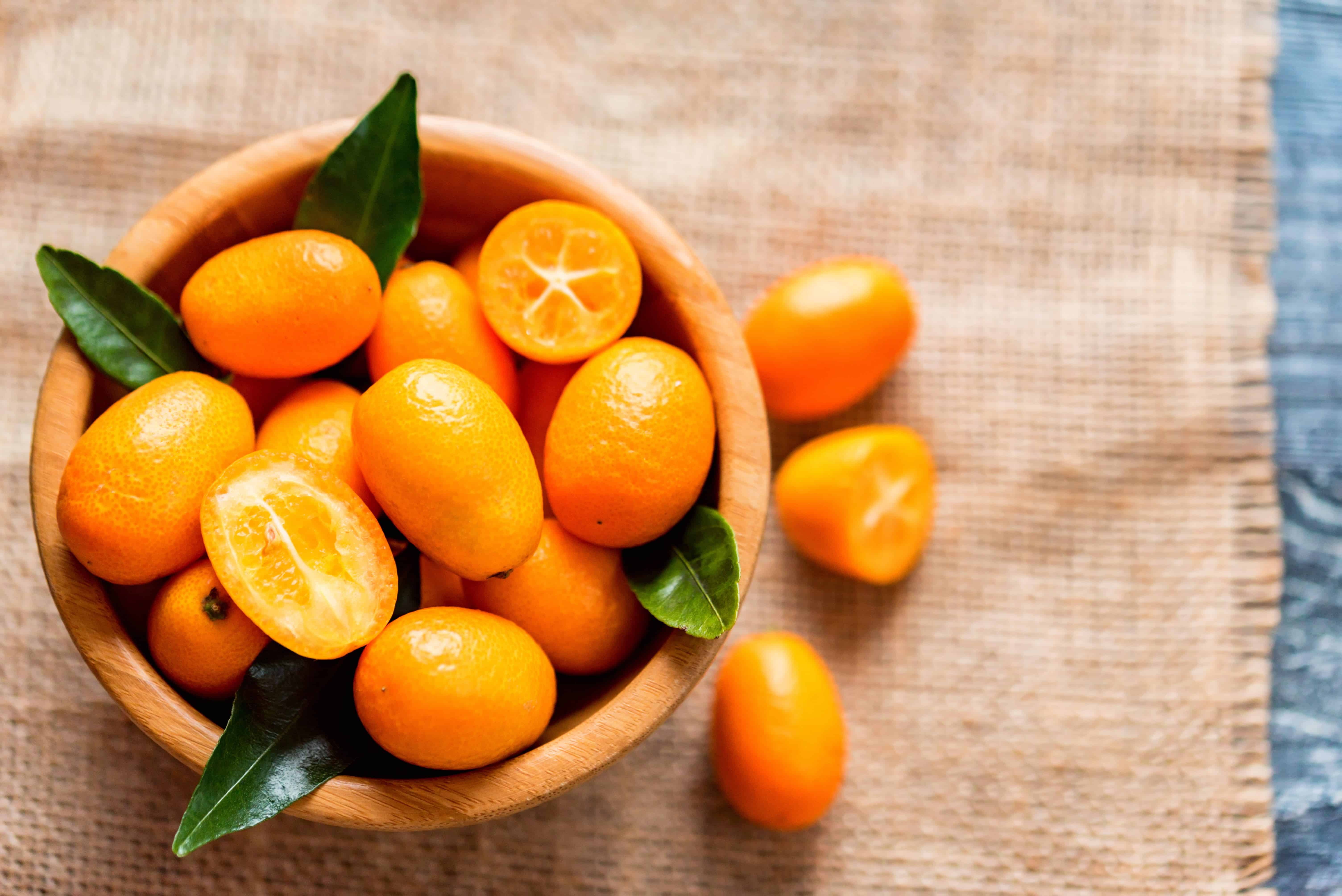
There’s actually some debate as to whether or not kumquats are true citrus fruits or not. Indeed, until relatively recently, kumquats were in their own genus Fortunella. Only recently have they been classed under the Citrus genus.
Kumquats are particularly popular in Australia, where they’re spelled with a C rather than a K. Scientists also believe it to be one of the ancestors of the calamondin. They’re quite small and have very small flesh. That’s not necessarily a problem though; due to their size, it’s common for people to eat them whole. They’re orange in color and have a tangy taste. Some say that the fruit’s skin also gives the fruit a distinct flavor.
Thanks to their small size, kumquats have a wide variety of uses. Of course, people can eat them whole. However, they can also be used as ingredients in baked and cooked dishes. They’re quite versatile fruits after all. Not only that, but thanks to their high Vitamin C and fiber content, they’re also great for the health conscious. They’re not always the easiest fruits to find depending on what country you’re from. But if you have access to them, they’re worth trying.
Oroblanco
The oroblanco is a grapefruit and pomelo hybrid. Its name means “white gold” in Spanish. It’s actually very recent in origin. It is a result of years of cultivation at the University of California, Riverside beginning in 1958. Indeed, the oroblanco only began to be sold in stores decades later.
Despite being a relatively new fruit, the oroblanco already has its fair share of fans. Its main distinguishing feature is that it’s very sweet. Thanks to cultivation, the bitter taste the grapefruit family is known for is almost gone. However, due to its recent origin, it’s not always the easiest fruit to get a hold of. You’re more likely to encounter it in specialty stores than in regular supermarkets. However, if you want to try the grapefruit but aren’t a fan of bitter tastes, the oroblanco may just be the right for you.
Buddha’s Hand

The Buddha’s Hand could be the most unusual citrus fruit in the world. At first glance, you may not even think it’s a citrus fruit at all. However, it’s actually just a variety of citron, one that probably emerged due to a mutation.
As the name suggests, it resembles a human hand. Because of its appearance, it became a symbol of good luck in Asia, often seen in Buddhist temples as offerings. Indeed, many say that the fruit looks like hands in prayer.
Buddha’s Hand is surprisingly versatile despite its shape. The fruit can be turned into candies. It can also be eaten as-is or be used as an ingredient in dishes. The “fingers” are mainly used for aromatic or taste purposes rather than for eating. Thanks to its citrus heritage, it’s a healthy option for the health conscious. However, whether it’s due to its rarity or its unusual shape, it doesn’t come cheap. A single pound can easily cost a double-digit amount of dollars. Still, you may want to give it a try if only for how unique it is.
Tangor
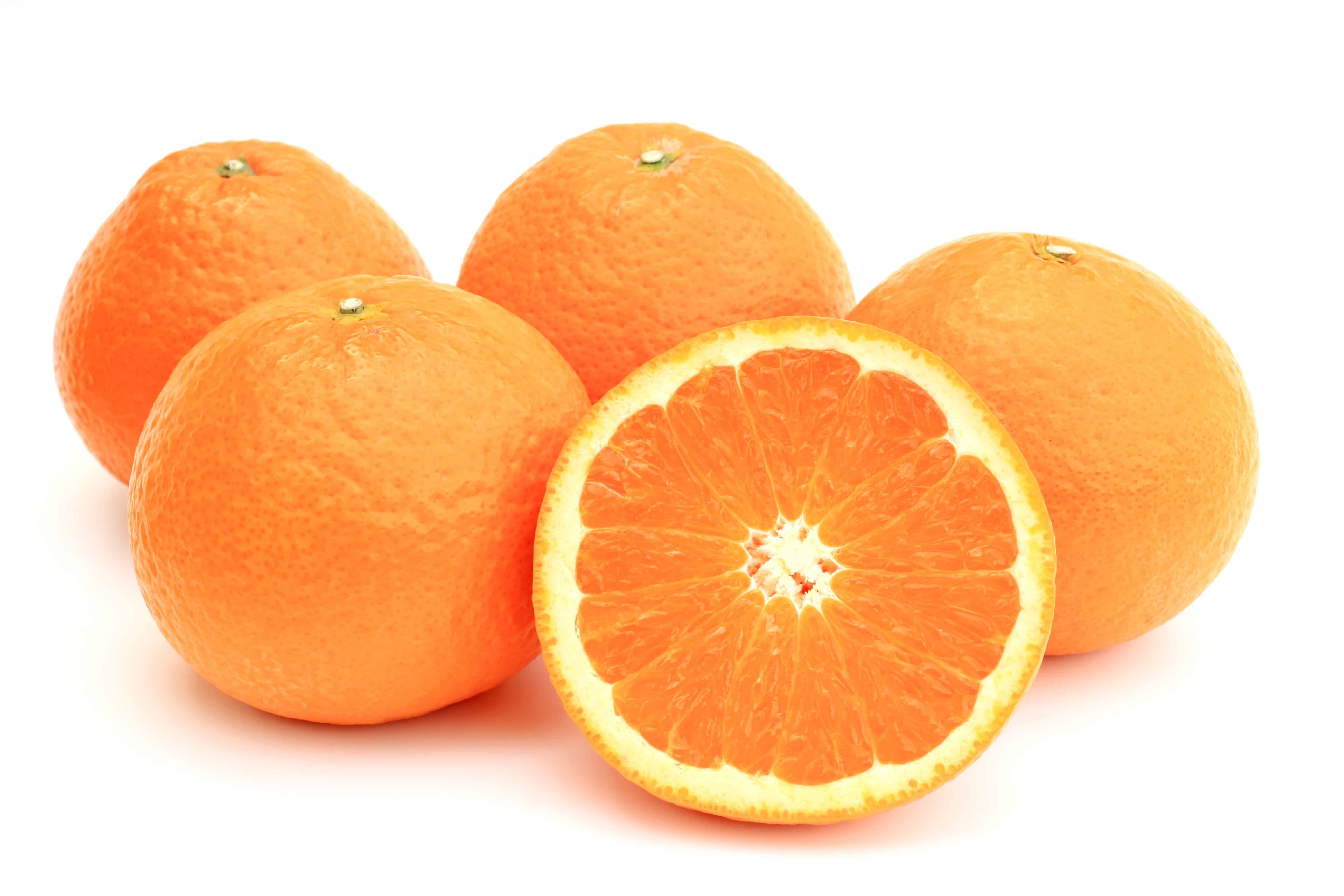
The tangor is sort of in a weird place in the citrus family. Its name comes from “tangerine” and “orange”. However, it’s actually a cross between a sweet orange and a mandarin. As you’ve already learned in this list, the sweet orange itself is a hybrid of the mandarin. So yes, it has a weird family tree.
On the outside, the tangor looks very similar to the sweet orange. They’re about the same size. However, thanks to its mandarin ancestry, it has an easily-peelable rind. Indeed, the interior looks like an oversized mandarin, with large parts that are easy to separate. However, its taste is closer to that of the sweet orange than the mandarin.
Finger Lime
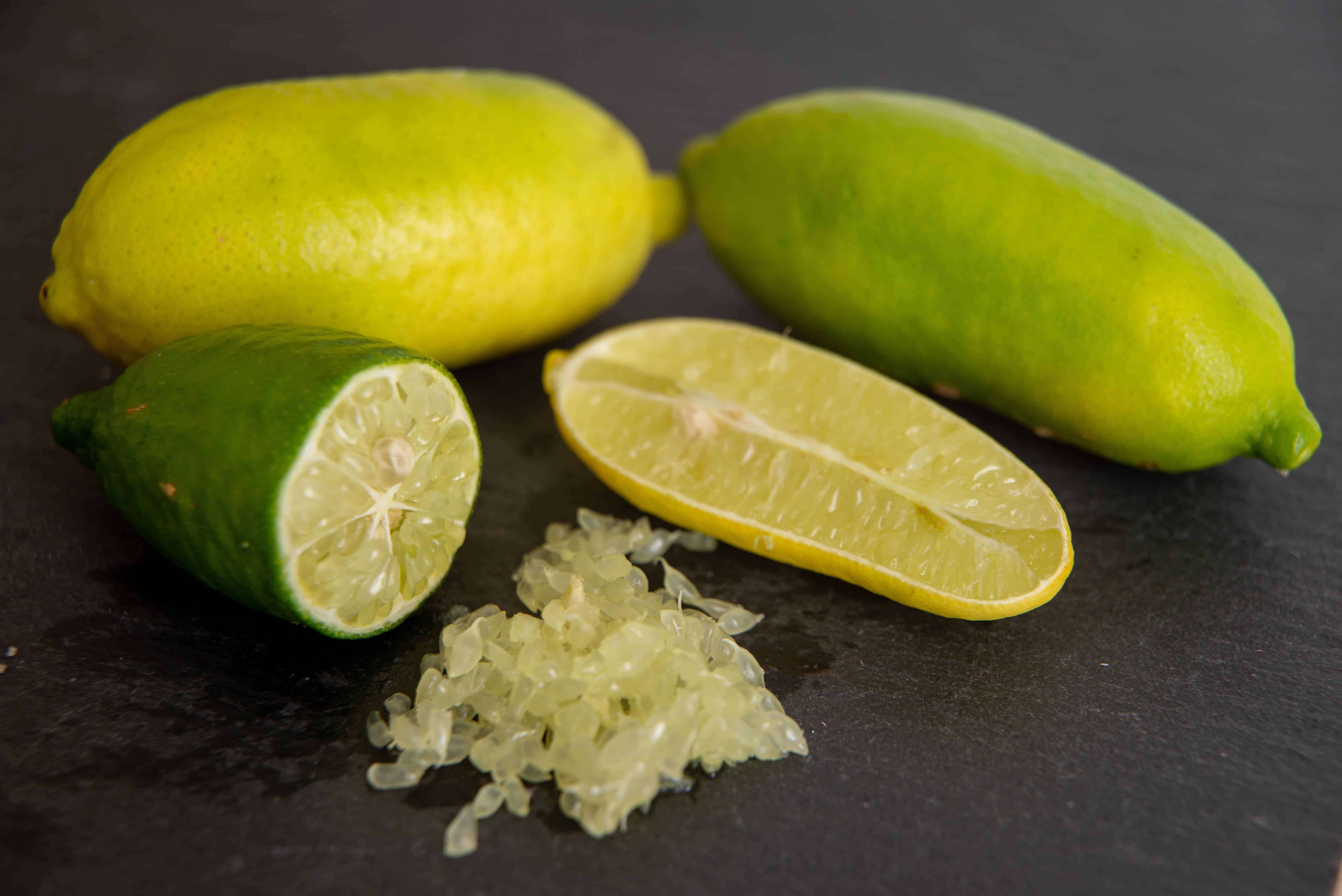
Looks like the Buddha’s hand isn’t the only citrus that human anatomy has (*ahem*) laid its fingers on. The finger lime is native to Australia. It also goes by the name caviar lime thanks to its pulp’s resemblance to that expensive delicacy. Indeed, “citrus caviar” is a common nickname for the fruit. The fruit itself is very small, somewhat resembling tiny bananas or fingers.
In recent years, finger limes have caught the attention of foodies and cooks alike. This is because the pulp tends to pop inside mouths. Owing to its rarity and special properties, the fruit does not come cheap. It may cost over $50 per pound, often more. Because of this, you’re more likely to encounter it in high-end restaurants than in a supermarket (although they are available online). Cooks and foodies can use it as an ingredient for sushi, salads, and many other dishes.
Kawachi Bankan
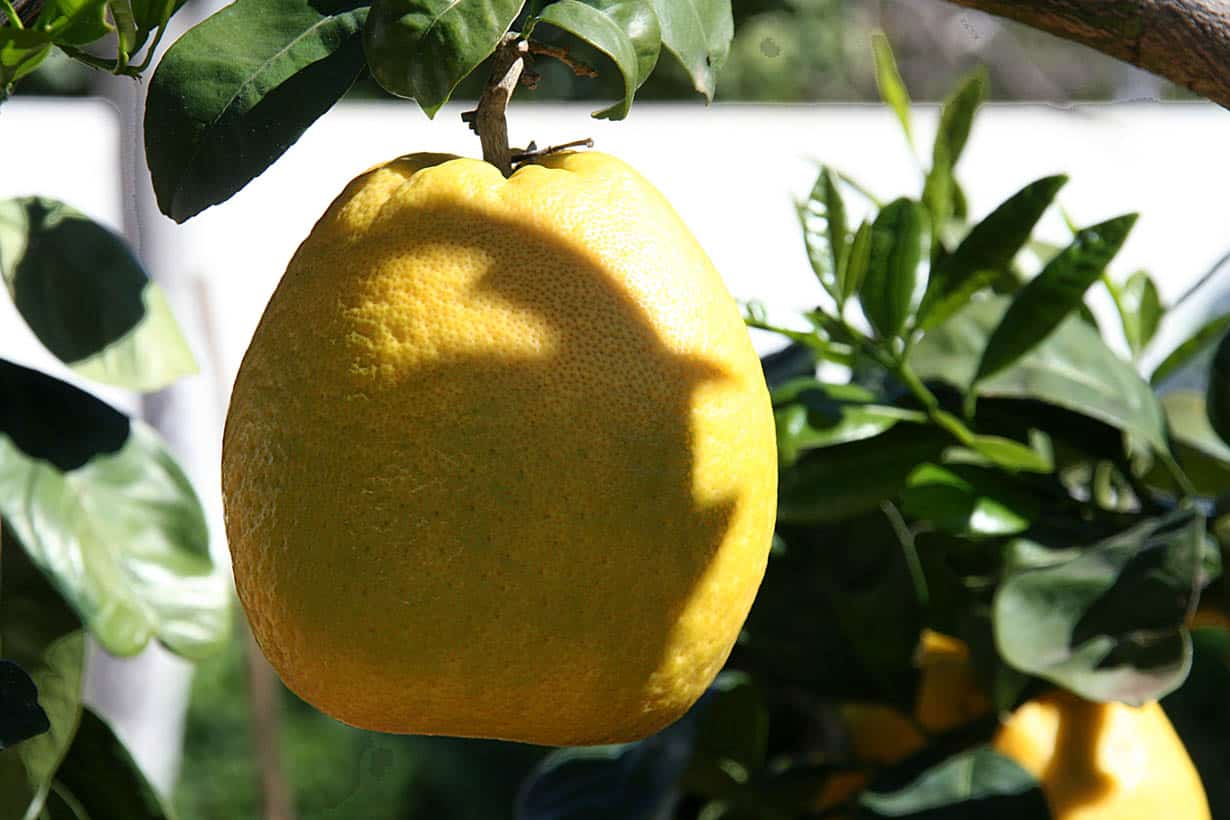
This pomelo hybrid is probably unfamiliar to most people outside Japan. However, it’s dear to the hearts of the residents of Ehime Prefecture in Shikoku, Japan. It actually originated in Kumamoto Prefecture in Kyushu, with the fruit taking its name from a now-defunct town there. Today, Ehime Prefecture is its main producer.
Its rind is thicker compared to some other citruses. It also has a rather sweet taste. Its outer color is more of a light orange color compared to the greenish-yellow of the pomelo. As mentioned earlier, it’s a prized product of Ehime, and many tourist and government organizations promote it to both locals and visitors. It’s also available in juice form, found in some stores across Japan.
Murcott
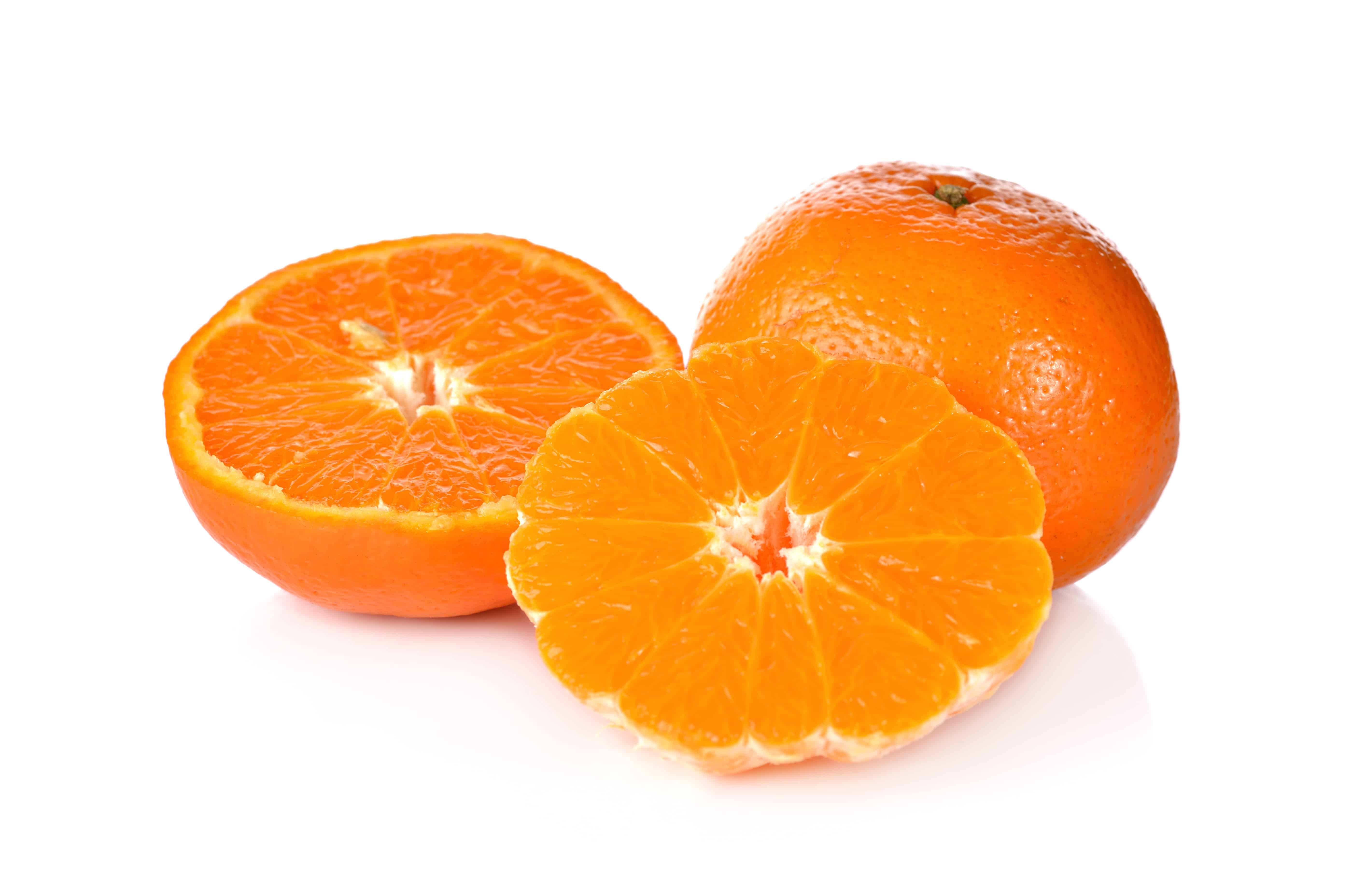
The final entry on this list is yet another hybrid. This time, it’s actually a tangor. It’s associated with Florida, from where it’s believed to have originated. Its origin is somewhat mysterious, although genetic testing has shown that it may be partly descended from King tangelo. The Murcott is named after Charles Murcott Smith, who owned the farm where the fruit possibly originated. It also goes by the brand Honey Tangerine, but some sources suggest avoiding the use of this name.
The Murcott is a very sweet tangor. It also has a rind that’s easy to peel. The Murcott itself has a number of descendants, such as the Nadorcott variety that’s even sweeter and is also seedless.
Was this page helpful?
Our commitment to delivering trustworthy and engaging content is at the heart of what we do. Each fact on our site is contributed by real users like you, bringing a wealth of diverse insights and information. To ensure the highest standards of accuracy and reliability, our dedicated editors meticulously review each submission. This process guarantees that the facts we share are not only fascinating but also credible. Trust in our commitment to quality and authenticity as you explore and learn with us.
